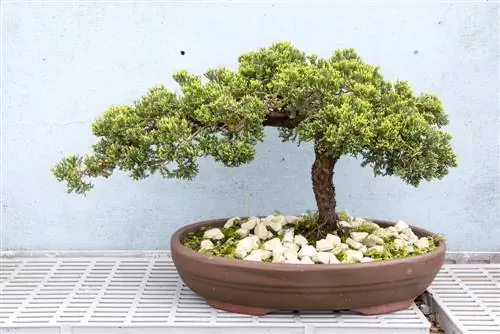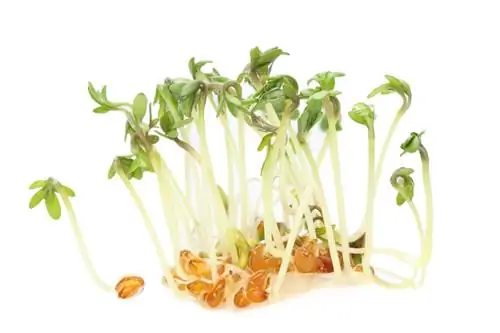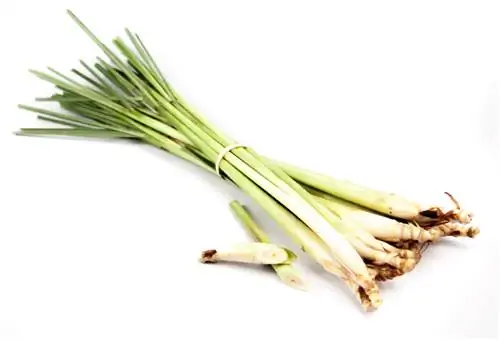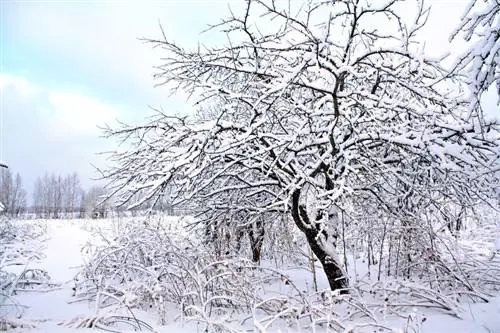- Author admin [email protected].
- Public 2023-12-16 16:46.
- Last modified 2025-01-23 11:22.
Bonsai design is a complex art with meditative characteristics. Anyone who dedicates themselves to this cultivation variant needs a lot of patience and time. Conifers look bizarre in miniature form, but very few species are suitable for indoor cultivation.
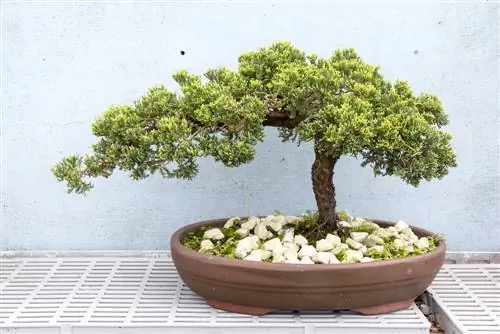
Which types of conifer bonsai are suitable for indoor and outdoor use?
Conifer bonsai are suitable for indoor and outdoor care, with some species such as Monterey cypress, large-leaved rock yew and indoor fir being suitable for indoor cultivation. Outdoor plants prefer the garden or planting bowls and are available in different types, ideal for beginners.
Indoor
Few conifers grow in room conditions all year round. The maintenance effort is significantly higher, especially in the winter months, because pest insects reproduce more easily in mild and humid conditions.
Monterey Cypress
Cupressus macrocarpa is a species native to California that is suitable for home care. The 'Goldcrest' variety is considered a popular object for bonsai design. It is known as lemon cypress because of its fresh-smelling leaves. Indoor cypresses grow strictly upright.
How to shape a bonsai:
- Choose the largest specimen possible for the spruce shape
- Cut the tree back to the desired size that fits the trunk thickness
- wire the top branch and bend it upwards
- bracing lower branches with wires
It thrives on calcareous soils in coastal regions, values nutrient-rich conditions and requires continuous irrigation. Since it is often in fog in its native habitat, you can spray the foliage regularly with water. The temperatures in winter are cool but frost-free. The warmer the room conditions are, the higher the humidity should be.
Large-leaved stone yew
Podocarpus macrophyllus is an evergreen conifer native to China and Japan that does not tolerate cold. In summer, the species, which is widely grown as bonsai, feels comfortable outdoors. Indoor breeding all year round is possible. It values a good supply of water and nutrients and, with its flexible branches, offers ideal starting material for expressive shapes.
Indoor fir
Araucaria cunninghamii comes from New Guinea. This species proves to be easy to care for and robust, which makes the indoor fir extremely popular as a bonsai. It is characterized by a high water storage capacity, which is why you should water moderately. The substrate should not dry out to avoid growing stress. Nevertheless, the coniferous tree tolerates heat and dryness as well as cold and shade in the short term. This we alth expresses the undemanding nature of the location. Indoor firs grow in different lighting conditions as long as there is no direct sunlight.
Outdoor
Coniferous trees prefer outdoor conditions, even in the miniature version. They can be planted directly in the garden or thrive in a planter on the balcony or terrace. Since the supply of nutrients in the bonsai pot is limited and the substrate dries out quickly, you must fertilize and water the bonsai well.
Types for beginners
The common juniper is available in every tree nursery as a cheap raw material. The branches can be easily shaped even after years. The common yew has particularly hard wood, which is why it is well suited for working out areas of dead wood. The European larch is popular because of its golden yellow autumn colors.

